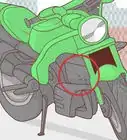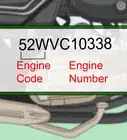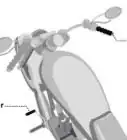wikiHow is a “wiki,” similar to Wikipedia, which means that many of our articles are co-written by multiple authors. To create this article, 16 people, some anonymous, worked to edit and improve it over time.
This article has been viewed 307,168 times.
Learn more...
Push-starting (sometimes called bump-starting) is a technique used to start a vehicle's engine that involves engaging the transmission while physically pushing the vehicle forward. For motorcycle riders, push-starting is a useful skill to have under your belt when you have a dead battery or an engine that won't turn over. See Step 1 below to start learning how to bring your dead bike back to life!
Steps
-
1Check for other issues that may be preventing the bike from starting. Before trying to push-start your bike, it can save time in the long run to quickly check for the types of problems that won't be helped by push-starting. For instance, it only takes a second to make sure that your bike isn't starting because it's out of gas - simply check the gas gauge. Below is a short checklist that you may want to run through before push-starting - if one of these conditions is not true, this may be the reason your bike isn't starting:[1]
- There is fuel in the tank.
- The petcock is set to "on" (more pertinent to older bikes).
- The kickstand is up.
- The transmission is in neutral.
- The kill switch is set to "run".
-
2Put the bike in 1st or 2nd gear. Push-starting requires the bike to be in a relatively low gear. For most bikes, 2nd gear is the easiest gear for push-starting, though it is usually also possible in 1st gear.[2] Rarely, some bikes will even be easier to start in 1st gear than in second.
- Usually, if your bike is parked, it's in neutral - you can tell whether this is the case by pushing it forward. Neutral is the only gear that allows the bike to roll forward without holding in the clutch. To shift from neutral to first on a manual bike, depress the clutch and press down on the foot control. To shift from first to second, depress the clutch and press up on the foot control.[3]
Advertisement -
3Hold the clutch in and begin pushing. Most guides recommend getting the bike to a speed of at least 5 mph (8.0 km/h) for a successful push-starting.[4] This will require a stretch of open space in front of you, so clear the area of any obstructions before beginning. You may also want to leave plenty of space on either side on the off chance that you lose control of the bike after it starts.
- You can reach push-starting speed quite easily by allowing the bike to roll downhill. In this case, rather than running beside the bike and pushing, you would ride the bike. If attempting a downhill push-start, take care to ensure that you don't lose control of the bike.
-
4Release the clutch and hit the starter. Once you've gathered enough speed, release the clutch and hit the starter button in one smooth motion as the bike is rolling. Give the bike a moderate amount of throttle. As soon as the bike starts, engage the clutch again to prevent the bike from getting away from you.[5]
-
5Rev the engine. Now that you've got your bike started, you don't want it to die again. With the clutch depressed, rev the engine at a medium level so that your bike doesn't choke down or go dead.
- Revving the engine has the added effect of charging your battery if the reason your bike wouldn't start is because the battery was dead.
-
6Ride away. Once you've got your motorcycle running, it's unlikely to stop again unless you turn it off on purpose or stall the engine. If your battery was drained, riding your bike around and/or revving your engine can help restore some of the charge, preventing the need for future push-starts.
- Before turning the bike off, be sure to address the underlying issue that caused the bike not to start in the first place (or at least prepare to do so). A bike that requires push-starting to start may have problems with the battery or fuel system that can require the attention of a mechanic. For instance, if your bike's battery is on its last legs, you may want to ride your bike to the nearest mechanic's to get a new battery before turning it off.
Community Q&A
-
QuestionWhy does my neutral light not come on when I have it in neutral?
 Community AnswerNeutral light indicator switch is likely broken. Check the connections at both ends and make sure the wire is intact top to bottom. If you can't fix it by repairing the wire or soldering the connection, you'll have to buy a new one and replace it. Quick and easy job, depending on your make/model/year it shouldn't be too expensive at all.
Community AnswerNeutral light indicator switch is likely broken. Check the connections at both ends and make sure the wire is intact top to bottom. If you can't fix it by repairing the wire or soldering the connection, you'll have to buy a new one and replace it. Quick and easy job, depending on your make/model/year it shouldn't be too expensive at all. -
QuestionWhat about fuel-injected Sporster? It is heavy and really difficult to push.
 Adam MonkCommunity AnswerFind a hill, get it in first gear, turn the key to the on position, then roll it down the hill to a decent speed, then drop the clutch.
Adam MonkCommunity AnswerFind a hill, get it in first gear, turn the key to the on position, then roll it down the hill to a decent speed, then drop the clutch. -
QuestionIf I could previously roll start my bike and now it won't start by rolling it, what's wrong with it?
 Community AnswerOnly three things go into starting an engine: fuel, air and spark. First, check your spark plugs for damage or fouling, replacing them if necessary. If they're all good, you need to take the carburetors out and check the jets for any kind of muck or obstruction. Clean them and shoot some pressurized air through the thin end. While you're there, drain and clean your float bowls. As for air, if it's a single cylinder, check the valve shim for wear, as these go every 30,000km or so. You should be able to find tutorials for your bike online.
Community AnswerOnly three things go into starting an engine: fuel, air and spark. First, check your spark plugs for damage or fouling, replacing them if necessary. If they're all good, you need to take the carburetors out and check the jets for any kind of muck or obstruction. Clean them and shoot some pressurized air through the thin end. While you're there, drain and clean your float bowls. As for air, if it's a single cylinder, check the valve shim for wear, as these go every 30,000km or so. You should be able to find tutorials for your bike online.
Warnings
- Don't try this on crowded streets.⧼thumbs_response⧽
- Always wear a helmet.⧼thumbs_response⧽
Things You'll Need
- A motorcycle
- A helmet
- A hill (optional)
References
- ↑ https://www.bestbeginnermotorcycles.com/push-start-a-motorcycle/
- ↑ https://www.youtube.com/watch?v=T9D3TBy6hYI
- ↑ https://www.youtube.com/watch?v=T9D3TBy6hYI
- ↑ https://www.bestbeginnermotorcycles.com/push-start-a-motorcycle/
- ↑ https://www.ellaspede.com/blog/latest/how-to-clutch-push-roll-start-a-motorcycle/
About This Article
To push start a motorcycle, start by shifting it into first or second gear. Then, hold onto the clutch, and start pushing your motorcycle. Once you're going at least 5 miles per hour, release the clutch and press the starter button. Finally, engage the clutch again, rev the engine, and start riding your motorcycle to charge the battery. To learn how to check for common issues that might be preventing your motorcycle from starting, read on!
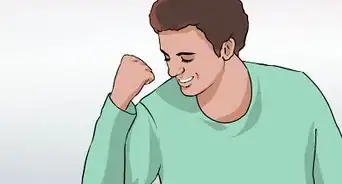
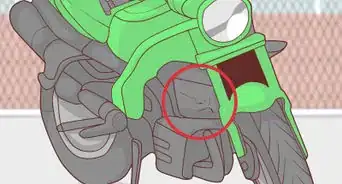
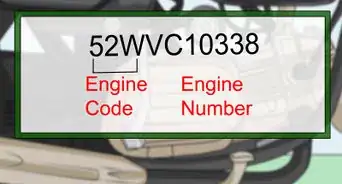
-Step-13.webp)
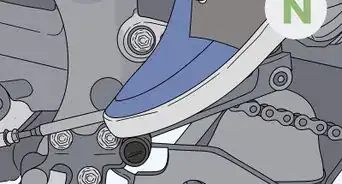
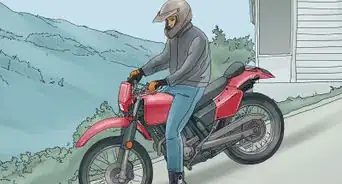
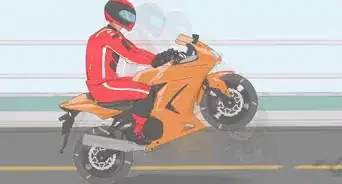
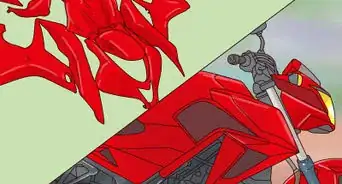
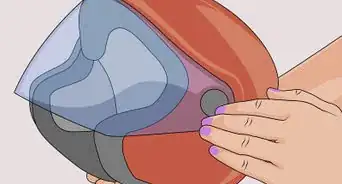
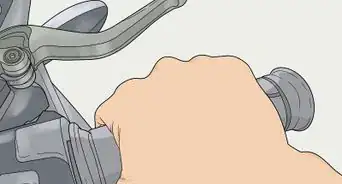
-Step-17.webp)









